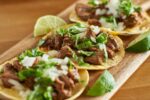Quinoa has become an increasingly popular superfood grain, praised for its high protein content and nutrients. This hearty, nutty seed can be substituted for rice or couscous in many dishes. But with its grain-like properties, a common question is—can you eat quinoa raw or does it need to be cooked?
While raw quinoa is edible, it’s not necessarily tasty or easy to digest. Read on as we dive into the details on properly preparing quinoa, including whether eating it raw is recommended and how to cook it for maximum nutrition.
What is Quinoa?
Quinoa is considered a “pseudograin,” meaning it’s not technically a grain but a seed. The quinoa plant is an annual herb that produces clusters of seed pods containing quinoa seeds.
While not a true cereal grain like wheat or oats, quinoa seeds have a similar composition and are used in grain-like ways.
There are over 120 varieties of quinoa, but the most common are:
-
White quinoa – The most widely available variety. Has a light, fluffy texture when cooked.
-
Red quinoa – Has a crunchier texture and subtle hazelnut flavor.
-
Black quinoa – Earthier taste and velvety texture. Holds its shape well when cooked.
-
Tri-color quinoa – A blend of all three colors. Provides fun visual appeal.
No matter the color, quinoa is highly nutritious. It provides all 9 essential amino acids, making it a complete protein. It also boasts vitamins, minerals, fiber, and antioxidants.
Can You Eat Quinoa Raw?
Quinoa contains saponins, bitter defensive compounds that deter pests. While small amounts are safe (and even beneficial), higher concentrations can cause stomach upset.
Most quinoa sold commercially is pre-rinsed to remove saponins. But traces may remain, making raw quinoa unpleasantly bitter with a soapy taste.
In addition, quinoa seeds are small and hard when raw—chewing them could be off-putting. The digestibility of raw quinoa is also questionable.
So while you can eat raw quinoa, it won’t provide the best experience. Cooking is recommended to fully remove saponins and soften the seeds for tastier, more comfortable eating.
Should You Eat Raw Quinoa?
Eating quinoa raw is not recommended, for a few reasons:
-
Unpleasant taste – Raw quinoa is quite bitter and soapy.
-
Difficult to digest – Its hard seeds may pass through undigested.
-
Anti-nutrient effects – Raw quinoa contains phytates that inhibit mineral absorption.
-
Contamination risk – Raw seeds may harbor dangerous bacteria.
Cooking quinoa breaks down phytates and saponins, softens the seeds, and kills any potential pathogens, leaving only wholesome nutrition behind.
While not toxic, raw quinoa doesn’t provide an enjoyable eating experience. Lightly cooking it is the preferred preparation method.
How to Cook Quinoa
Cooking quinoa is simple—just combine the seeds with liquid on the stovetop:
Ingredients:
- 1 cup quinoa
- 2 cups water or broth
Directions:
-
Rinse quinoa to remove any saponin residue.
-
Combine quinoa and liquid in a saucepan. Bring to a boil.
-
Reduce heat, cover, and simmer for 15 minutes until liquid is absorbed.
-
Fluff with a fork and let sit 5 minutes before serving.
The quinoa is ready when the outer germ is visible and the seeds are translucent. The fluffy cooked seeds can then be enjoyed hot, at room temperature, or chilled.
How to Prepare Raw Quinoa
If you wish to eat quinoa raw, you’ll need to prep it properly to improve palatability:
- Thoroughly rinse to remove saponins.
- Soak for 2-4 hours to soften seeds.
- Sprout for 1-2 days to further soften. Sprouting also reduces phytic acid.
To sprout:
-
Soak quinoa overnight. Drain water.
-
Transfer to a jar with cheesecloth on top.
-
Rinse quinoa 2-3 times per day. Seeds will sprout tails.
-
Once sprouted, store in fridge up to 1 week.
The sprouting process enhances the nutritional quality of raw quinoa. Sprouted seeds can be eaten as is or used to add crunch to salads, sandwiches, and more.
Nutrition of Raw vs. Cooked Quinoa
While raw quinoa offers benefits, cooking enhances its nutritional value:
Raw quinoa
-
Contains anti-nutrients like phytic acid that impair mineral absorption
-
Harder seeds not as digestible
-
Higher amounts of antinutrients like saponins
Cooked quinoa
-
Reduces phytic acid and saponins
-
Improves digestibility and nutrient absorption
-
Boosts protein quality by denaturing the proteins
-
May increase antioxidant capacity through Maillard reactions
Overall, light cooking improves quinoa’s palatability and nutrient bioavailability. Enjoying it cooked ensures you reap its full nutrition.
Health Benefits of Cooked Quinoa
When prepared properly, quinoa offers many science-backed benefits:
-
High in protein – Contains all essential amino acids needed for growth and repair.
-
Good source of fiber – Promotes healthy digestion and lowers cholesterol.
-
Rich in minerals – Provides magnesium for bone health, iron for energy, and zinc for immunity.
-
Antioxidant-rich – Contains phenolic acids that combat cellular damage by free radicals.
-
Gluten-free – Safe for those with celiac disease or gluten intolerance.
-
Low glycemic – Won’t spike blood sugar levels, making it suitable for diabetics.
With its stellar nutritional profile, it’s easy to see why cooked quinoa is considered a top superfood.
Tips for Enjoying Quinoa
Here are simple ways to incorporate cooked quinoa into your diet:
-
Toss with roasted veggies and chickpeas for a quinoa salad.
-
Stir into chili or soups for added protein.
-
Combine with nuts and dried fruit for a filling breakfast porridge.
-
Shape into veggie burger patties for the grill.
-
Use instead of rice in stuffed peppers, sushi rolls, or stir fries.
-
Make quinoa bowls with your choice of toppings like avocado, egg, beans, slaw, etc.
With its mild flavor, cooked quinoa adapts well to both savory and sweet dishes. Explore different seasonings and preparations to keep enjoying its benefits.
The Verdict on Raw Quinoa
While raw quinoa won’t make you sick, its bitter taste and dense texture make eating it unenjoyable. Lightly cooking quinoa breaks down the saponins and phytates for better palatability and digestion.
Cooking also enhances the bioavailability of quinoa’s protein, minerals and antioxidants. For maximum nutrition and flavor, it’s best to enjoy quinoa cooked.
But if you do choose to eat it raw, be sure to soak or sprout it first to improve taste and digestibility. Focus on sprouted raw quinoa in small amounts to minimize anti-nutrients.
At the end of the day, savor quinoa in whichever form brings you the most joy—just don’t miss out on this superfood!
https://www.livestrong.com/article/354323-can-you-eat-quinoa-raw-or-uncooked/
https://www.quora.com/Is-it-safe-and-healthy-to-eat-quinoa-raw-even-if-you-don-t-sprout-it-I-m-talking-about-eating-it-straight-out-of-the-bag




